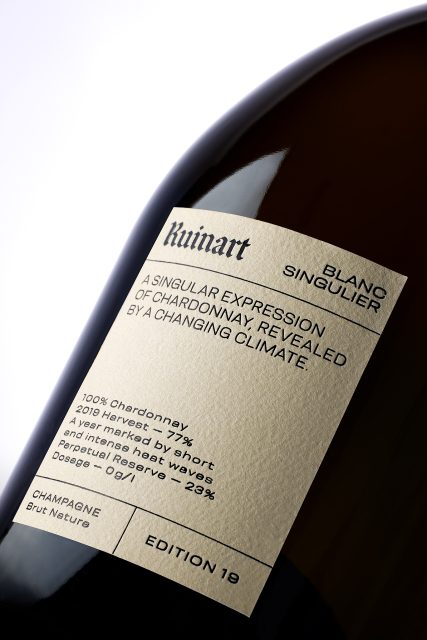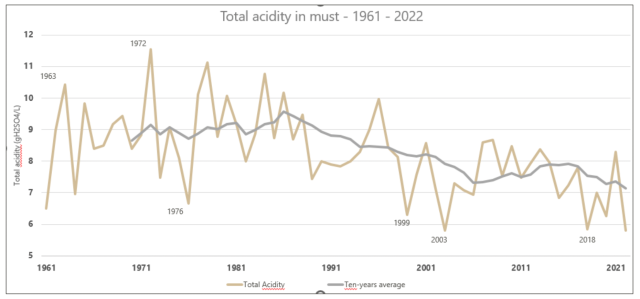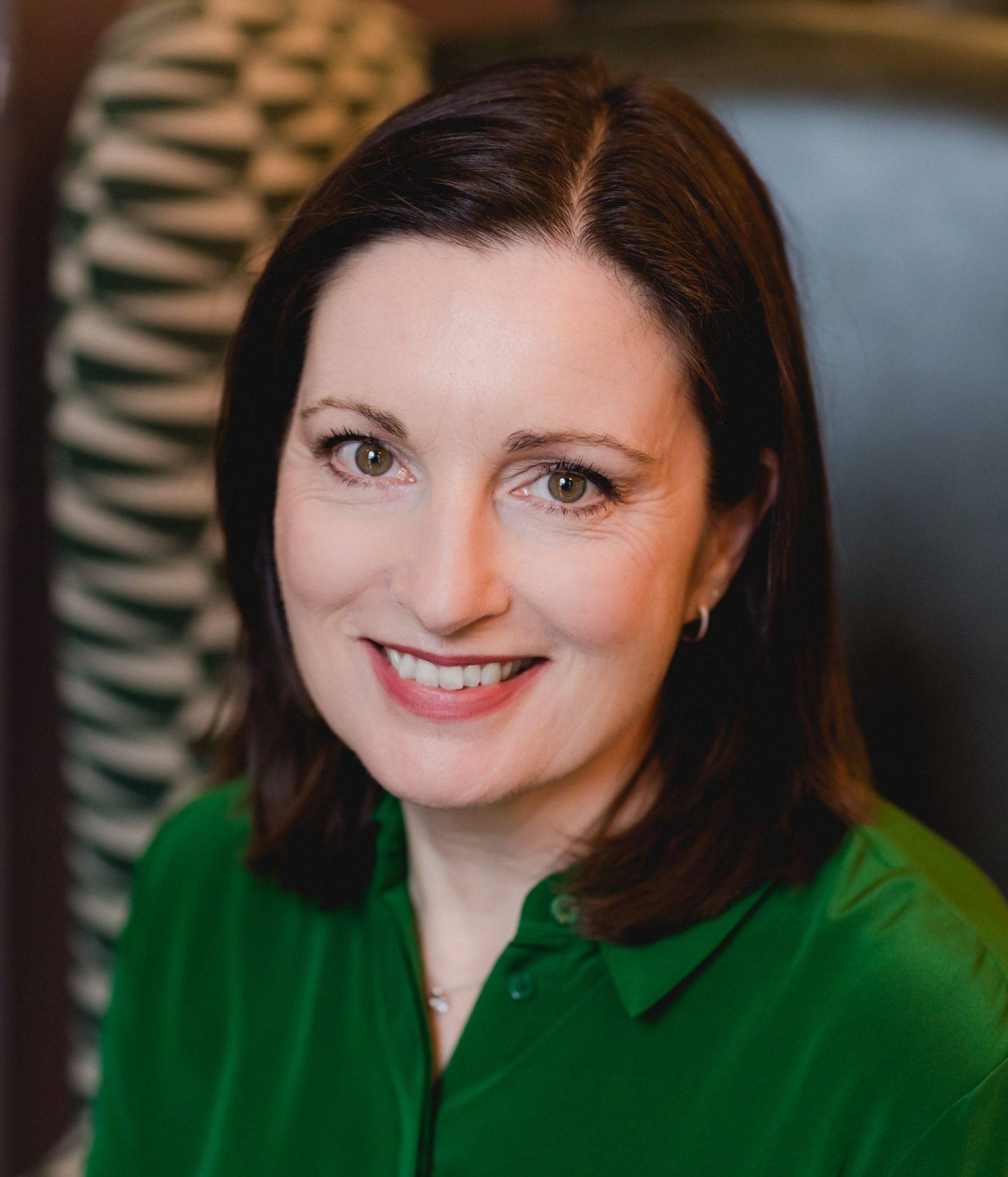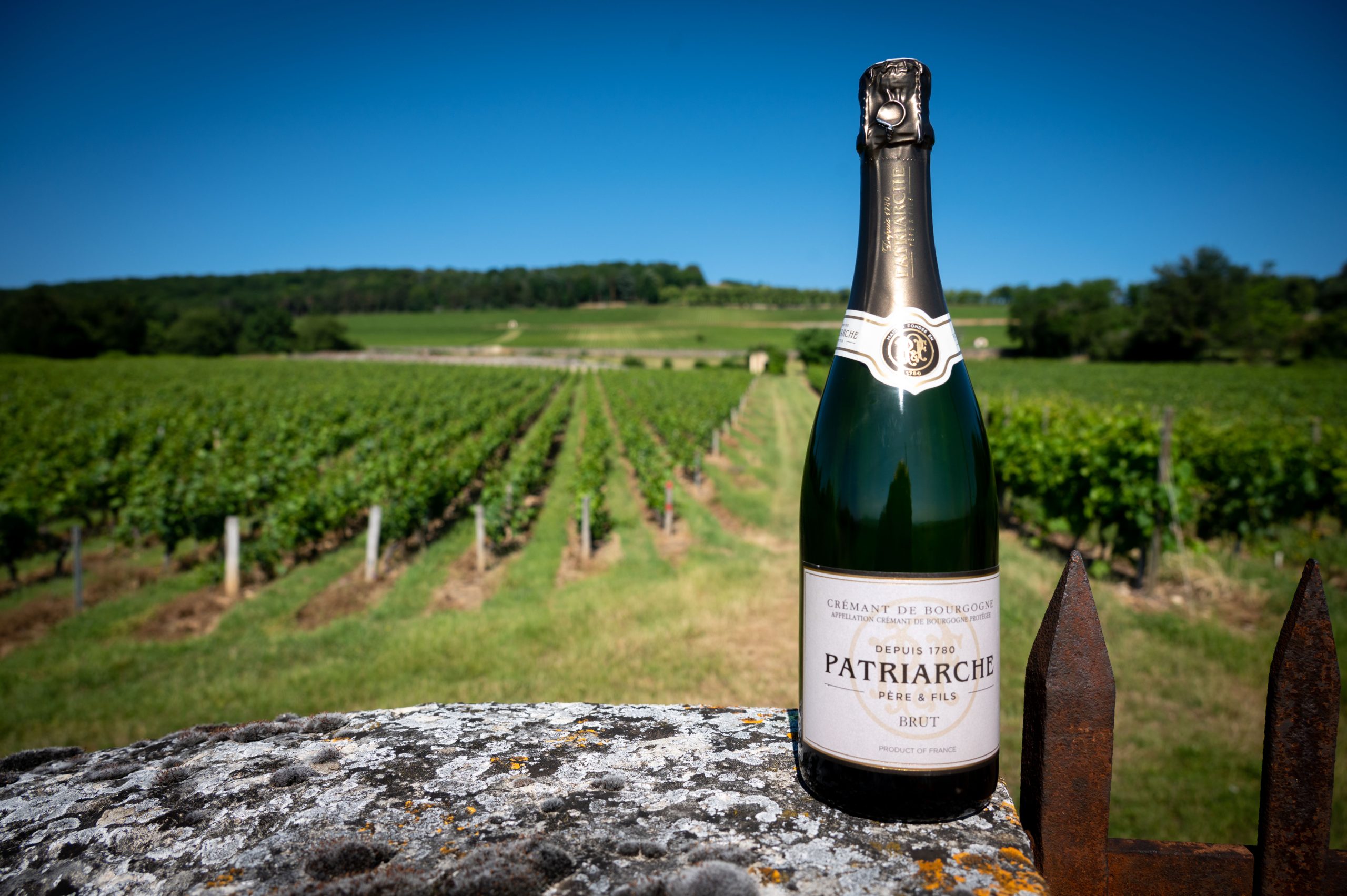Ruinart creates a Champagne for climate change
With a changing climate shortening the growing season in Champagne, bringing riper grapes with lower acid levels, cellar masters are considering how to adapt their winemaking to new conditions in the region, with one chef de cave claiming to have crafted “the blanc de blancs of the future”.

That person is Ruinart’s Frédéric Panaïotis, who launched in the UK this month the maison’s first new cuvée in more than 20 years, called Blanc Singulier, which he said was created to respond to fact that, as previously reported by db, conditions in a vintage such as 2018 – the hottest on record – “were more like Châteauneuf-du-Pape in the 80s, than Champagne.”
Highlighting the challenge for Champagne cellar masters, and revealing the motivation for this new expression – which is priced around 20% higher than Ruinart’s Blanc de Blancs Brut NV – Panaïotis told a small gathering of UK press in London on 3 July that earlier flowering, as well as warmer summers, were leading to a contraction in the growing season for grapes in Champagne. It is also ensuring that the ripening process takes place in the longer, hotter and sunnier days of August, as opposed to the cooler months of September or October, as was more normal in the 80s and earlier.
With the average number of days between flowering and harvesting falling from almost 100 days in the 1980s to 87 days in this century, he said that achieving “technological ripeness and aromatic ripeness” was becoming an increasing challenge, by which he meant having a good sugar level in the berries, as well as enough acidity, and an absence of green flavours or overtly bitter phenolics.
Commenting that in years like ’22, ’18 – “and even ’17” – he witnessed a rate of ripening that “we have never known before”, and, as a result, “a discrepancy between two maturities: sugars and acids, and flavours”, which makes it hard to find the right moment to harvest, even if he stressed that the aim was to pick when there is a ripe taste in the berries.
And there’s a further challenge, according to Panaïotis, which relates to the fact that in hot years, “ripening takes place in late August, when the days are longer and the nights are warmer, which means that the leaves are functioning 100%, producing lots of sugars.” Continuing, he said, “If it’s also very warm, malic acid will be burnt in the berries, so the levels of acid will drop sharply: it’s why there’s such a steep ripening curve in hot vintages.”
Nevertheless, alcohol levels are still relatively low in Champagne, with Panaïotis recording an increase of 1% in potential alcohol since the 90s, taking the average to a little over 10% (see bar graph below). Pointing out that, “we can typically go to 11% before second fermentation,” he said, “so we are not there yet”, referring to reaching a point that’s too high – indeed, chaptalisation of musts is still a common practice in the appellation.

He also commented that “we still have plenty of acidity; it is not yet worrying,” adding that he was yet to be tempted to block the conversion of malic acid to lactic acid, which would bring more freshness to his Champagnes.
Having said that, he noted that in exceptionally warm years like 2018, ’22 and ’03, the bunches contained “little malic acid” in any case, and, “while we could look at increasing the tartaric acid, it’s not easy”.

In short, he asked, rhetorically, “Can we maintain our style of blanc de blancs into the future?”, before announcing a project dreamt up by him in 2015 – but started in 2016 – “to play with grapes in warm years to come up with a wine that’s a living proof.”
This has involved setting aside wines for what has now been called Blanc Singulier, “as a singular expression of Chardonnay revealed by a changing climate”, with a range of specialist winemaking techniques employed to compensate for the use of very ripe grapes by Champagne standards.
Among these is the ageing of some of the wines in casks “to get a bit more structure from the oak, and a bit more tension to compensate for less acidity”, as well as extending the maturation time on the lees. It has also involved the absence of sugar in the liqueur d’expedition – Blanc Singulier is a zero dosage Champagne (a first for Ruinart).
Having experimented with the ’16 and ’17 harvests, Panaïotis decided to launch the concept officially with the 2018 vintage, “which broke every single record” in Champagne – being the hottest, as well as the highest scoring on the Huglin Index, which is essentially a sum of the number of days when the average temperature exceeds 10 degrees Celsius.
With Champagne reaching a Huglin Index total of 2,200 in 2018, he said the conditions in that vintage “were more like Châteauneuf-du-Pape in the 80s, than Champagne.”
Nevertheless, with the Blanc Singulier Edition 18 – named after the 2018 harvest it is based on – Panaïotis is confident that Champagne can retain its refreshing appeal even in hot years.
Partner Content
“Despite all the challenges of a very warm year, it [Edition 18] is still very Champagne, it is still Ruinart,” he said, adding, “There is nothing heavy about it; so even in exceptional years we can still make Champagne.”
Continuing, he said, “We see these maps showing the wine regions that will struggle to make wine in 2050, but with Champagne I am confident make we can wine for a few decades to come – we may have to recraft it to interpret new parameters, but this [Blanc Singulier] is proof we can manage.”
And for those who are fearful that a zero-dosage style make taste a little firm on the finish, Panaïotis stressed that the new cuvée, “even as a brut nature, is still soft,” stressing that “Ruinart should always be approachable from 9am to 9pm.”
Finally, having launched the Blanc Singulier with the 2018 base in the US and France last year, this year sees the concept officially unveiled in the UK, where the base year is 2019, labelled Edition 19.
While 2019 was “not as exceptionally high as 2018 in the Huglin Index, it was a year when we broke a temperature record in Reims, with nearly 43 degrees Celsius in August,” said Panaïotis.
The resulting expression – which has “a bit more reserve wine with 3% more” than the launch edition – remains a zero-dosage pure Chardonnay Champagne, and his best yet.
Speaking of the vintage generally, he said, “I’m more than convinced that 2019 is the best that I’ve seen – and the greatest between ’18, ’19 and ’20, along with ’17, which was a blanc de blancs year; 2019 has it all, it is nothing short of excellent.”
Continuing he said of the Blanc Singulier Edition 19, “The UK is lucky to start with 2019 instead of 18… there is umami and extra acidity, and, even with no dosage, it doesn’t feel like it lacks it [sugar] – it is distinctive and approachable.”
Then, looking further ahead, he said that the next Blanc Singulier will come from the 2020 harvest, while there won’t be one from 2021 – “it was a late ripening, cool year” – and we have made 22, but not 23, when it was warm, but yields were too high; there was too much dilution.”
For now, and focused on the 2018 harvest in Champagne, he said that it was his belief that Ruinart, with Blanc Singulier, “has invented the blanc de blancs of the future”.
Concluding, he said, “2018 was a completely exceptional vintage, but I can imagine it being the norm in 25 years from now.
“So this is proof that you can still make Champagne if ‘18 is the norm of the future; and if so, we have an answer.”
Read more
How climate change has made Champagne like Châteauneuf-du-Pape
Ruinart releases first new cuvée in 20 years
Related news
Non-vintage is ‘putting together a puzzle’ says Champagne Lallier




